How to Fix Broken Headphones
Find the problem
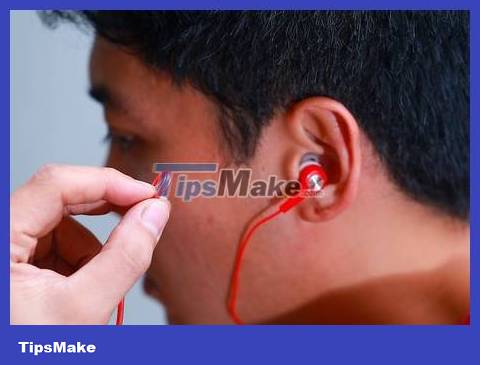
Try listening while bending the headphone cord. Plug in the headphones and bend the cord while listening. If you hear music coming from your speakers, see Repairing the power cable below.
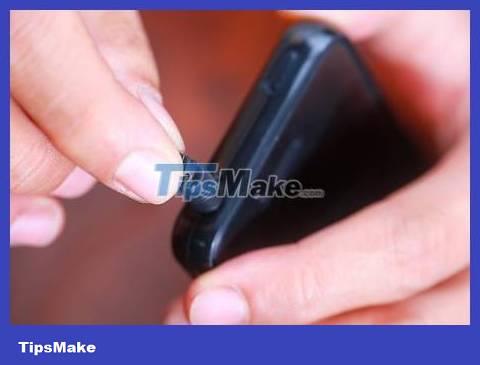
Try unscrewing and re-inserting the jack. If you only hear music when you try to insert the jack as far as it will go, see Fixing a broken jack .
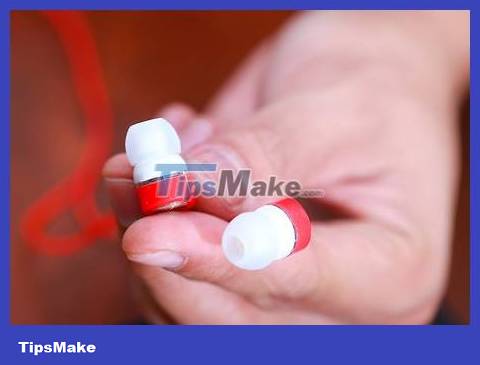
Borrow headphones from a friend. If you still don't hear anything, unplug the cable from the headphone speaker, connect it to another headphone speaker that you borrowed from a friend, if you hear sound, see Headphone speaker repair .
If the headphone cable cannot be unplugged, go to the next step, Using a multimeter .
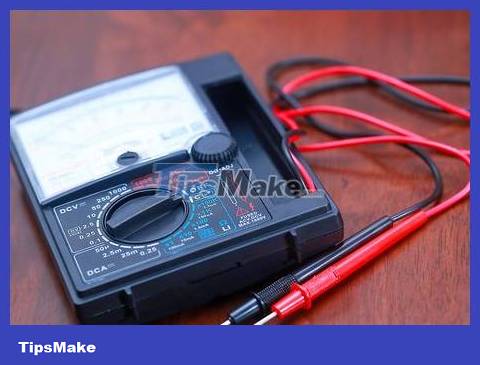
Use a multimeter. If you still can't find the problem, use a multimeter. You can buy it at an electrical store. You will need a sharp knife. If you are a child, you should ask an adult to help. Use a multimeter as follows:
Set the meter to conductivity test mode ))) or a similar symbol.
Insert the black jack into the hole marked COM.
Plug the red jack into the hole marked Ω, mA, or ))) .
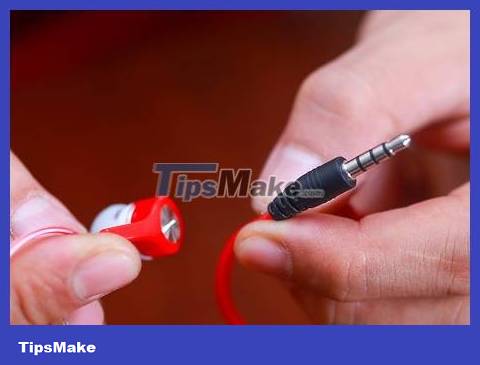
Check with a multimeter. The watch will 'beep' if there is no break inside the wire. Use a sharp knife to separate the insulating plastic layer according to the instructions below. Be careful not to cut the wires inside.
Make a cut near the jack and one near the headphone speaker.
Copper wire is usually covered with a colorless protective coating. Use a knife to gently scrape it off.
Hold the black jack of the power meter and touch the copper wire at one end of the headphone cord, the red jack to the other end. If the watch 'beeps' then the problem is with the headphone jack or the headphone speaker.
If it doesn't ring, make a cut in the middle of the wire and test each half of the wire.
Making another cut halfway through the wire does not cause the electric meter to beep. Continue doing this until you locate the broken wire within a few centimeters.
Continue to Repair the power cable step . Skip the recheck step.
Repair power cables
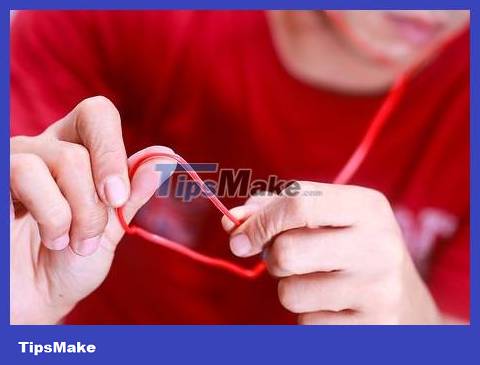
Check the power cord. Put on headphones and turn on the music. Bend the wire 90 degrees over the tip of your thumb and trace the length of the wire. When the music is noisy and intermittent, you have found the break. If the break is near the jack, see Jack Repair for repair instructions. If not, continue to the next step.
Once you've found the break, mark it with a piece of electrical tape.
If you have already found the break with a power meter, skip this step.
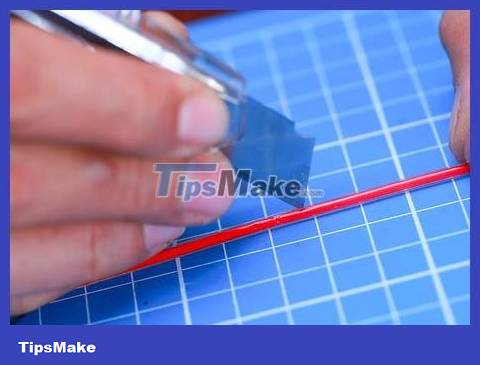
Separate the electrical wire cover. Use wire cutters, or carefully cut around the outside of the wire with a knife. Remove about 1.25 cm of wire sheathing. Widen the cut on both sides until you see where the wire broke. This is where you need to make repairs.
If the wire looks like two small wires stuck together, each wire will contain in its core one insulated wire (signal wire) and one bare wire (ground wire).
Apple headphones and some other types of headphones with a power cord will have 2 wires in the insulated core (left and right signals) and a bare wire as the ground wire.
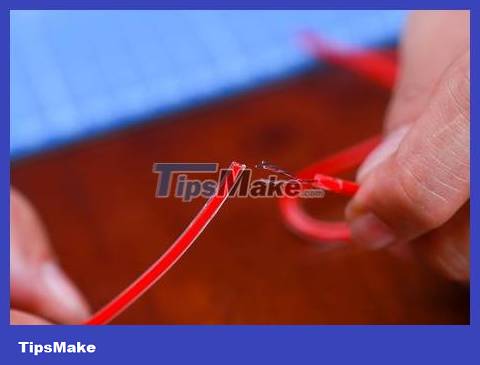
Cut the power cord. Cut the power cord in half. If the wire inside is broken/damaged, cut both sides of that area to repair the damage. You need to cut the wire evenly on the left and right sides. Unequal cord lengths can cause electrical damage to your headphones.
If just one wire is broken, you may want to resolder it without cutting or splicing the wire. Doing so will be faster, but the weld will be less secure.
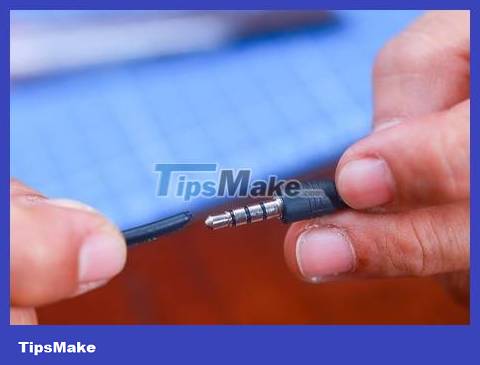
Thread a piece of shrink tubing onto the headphone cord. This is a rubber tube that looks like your headphone cable. Thread it onto the power cord to perform the next step. Once you've repaired the wire, you'll pull it back into the exposed wire area to protect it.
If you have to cut the string multiple times to find the break, attach a piece of pipe to each cut area.
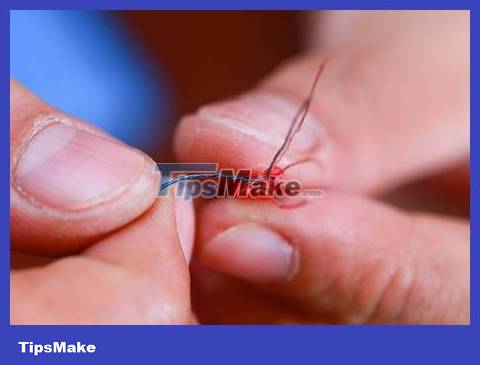
Reconnect the wires. This means that you will connect the wires together, making sure to connect the wires of the same color of insulation (or non-insulation) together. You can use two ways: Braid or twist together.
With braiding, hold the two pieces of wire you want to connect parallel to each other, then twist them to create the connection. This method is quick and easy to do, but the joint will seem cumbersome.
With the twisted-in connection, hold the wire so that the small copper wires of the two wires intertwine from one end to the other. Twist the wires in opposite directions, this will be more difficult but the connection will be neater and easier to hide.
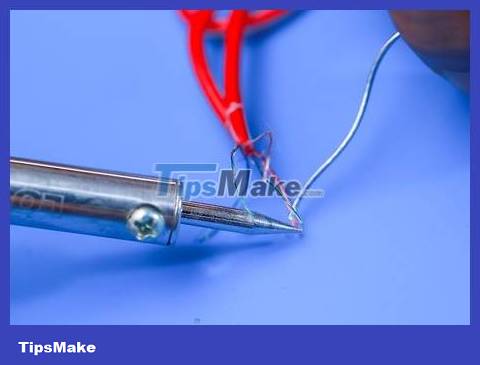
Weld the joints. Use an electric soldering iron to melt a small piece of solder tin on the wires. Do it again for the other wire. Let cool.
Unshielded bare wires are usually covered with a protective layer of paint, scrape it off with sandpaper or burn it off with a soldering iron before soldering. Avoid inhaling fumes.
Once cooled, wrap the two pairs of connections with tape to make sure the exposed wire ends are separated from the ground wire.
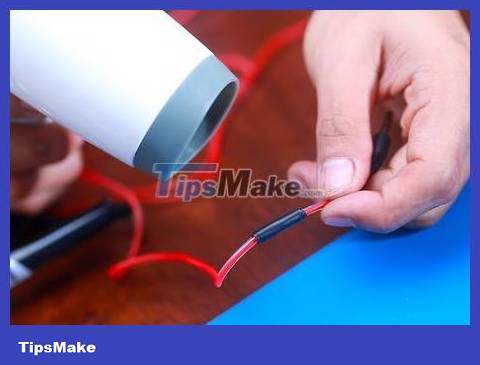
Pull the shrink tubing through the connection. Heat it with a hair dryer to re-sun it. Did you find it helpful to put the shrink tubing in before you resoldered the wire?
The pipe should shrink to ¼ of its original size, fitting tightly to protect and help the newly connected wire become more durable.
Fix broken jack
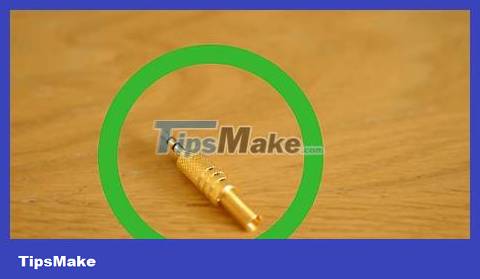
Buy a new jack. You can buy them online or at electrical stores. Choose a steel jack with stereo connections and a spring. Make sure it's the same type as your old jack, usually 3.5 mm.

Remove the old jack. Some jacks can be screwed out of the power cord. If your jack is mounted inside a plastic cover, you will have to cut it out, about an inch from the jack.
When you open the jack, look at the wires. If it looks healthy and hasn't been cut, just cut it off. Maybe the problem lies right in the wire near the jack.

Separate the wire with wire strippers. There will usually be one bare (unshielded) wire and two insulated or shielded wires. The bare wire will be the ground wire, the other wires will be the left and right signal wires.
The double wire has an additional bare wire, but the other wires inside are the same as the single wire.

Install the jack components through the wire. Unscrew the new jack. Pull the housing and spring down to the end of the wire. Remember to insert another piece of shrink tubing.
The main part of the jack must have two protruding pins at the top. If there is only one pin, the jack is mono, not stereo.
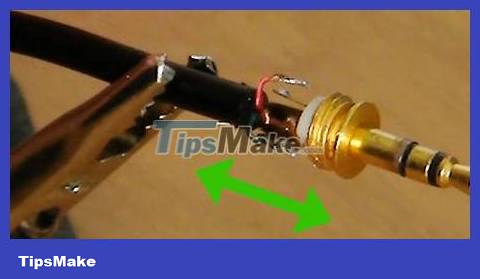
Connect the wires to the jack ends. Separate each of the three small wires of the power cord. Twist the frayed wire ends to make them neat. Connect the wires as shown below:
The bare wire will connect to the big leg, which is the longest piece of iron. If the headphones do not have bare wires, connect them with covers painted in two mutually striped colors.
The remaining two insulated wires will be connected to the other two pins (two short pins with rings on the ends). Because there is no convention for wire colors, if you connect the wrong wires, the sound of the left and right speakers will be mixed. Otherwise, the headphones will work normally.
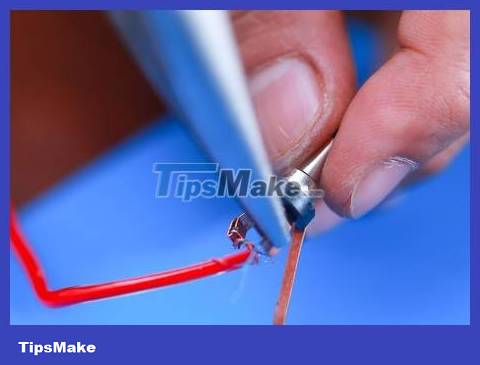
Clip the wires to the pins of the jack. Use a small paper clip or safety pin to secure them in place, do not let the wires touch each other.

Solder the wires to the jack. Use sandpaper to roughen the edges for easier welding. Place solder tin on the soldering iron. Heat the soldering iron so that the tin flows. Do the same with the other two wires.

Screw the lid back on. Re-screw the cover over the spring and jack. Try your headphones again. If you're still having problems, it's probably because the wires are touching each other. Open the cover and separate the wires from each other.
Repair headphone speakers
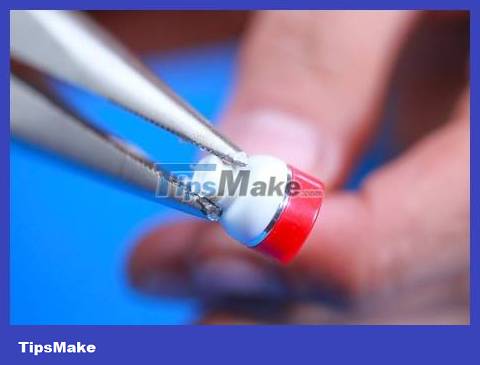
Open the headset. This process is different for different types of headphones. Search online for specific instructions for each type, or try these steps:
Find the screw location on the headset. You will probably need a size 0 quad screwdriver to open them.
Gently pry off the cover. When it falls off, find the screws inside and unscrew it.
Insert a file or some other thin tool into the gap between the two earpiece covers and pry them out. This can damage some headphones, so it's best to get instructions on how to do it first.
The headphone cover can be removed, but you may have to find a new rubber pad. Often the problem lies in the wire attached to the headphone speakers.
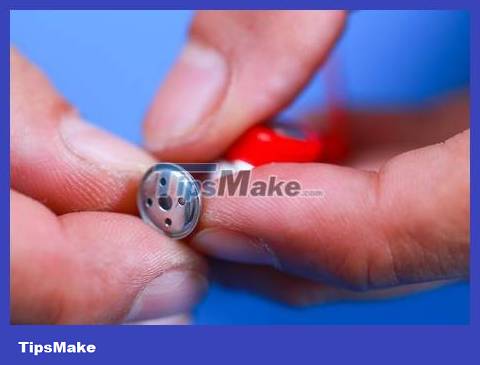
Find broken wires. If you're lucky, the problem will be very noticeable. Any broken wires inside the headphones will be reconnected to the speakers. Look for the small pins on the speaker, hopefully there is a wire attached to the other pin. Then solder the broken wire in its place.
If more than one wire is broken, you may have to read the instructions to see which wire goes where.
Make sure the wires do not touch each other.
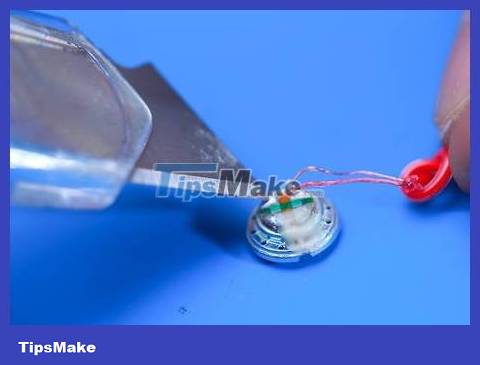
Replace headphone speakers. You can buy a new headphone speaker online, but it can be very expensive. If you feel the replacement is worth the cost, take your headphones and new speakers to an electrical repair shop. You can do it yourself, but there is a high risk of 'turning a healthy pig into a lame pig'.
Cut off the rubber lining around the speaker cover with a sharp knife.
Remove the old cone speaker inside.
Place the new speaker in the old position. Be careful not to touch the speaker membrane.
If you feel unsure, drizzle a little glue around its edges.
You should read it
- How to Wire a Contactor
- How to Connect Electrical Wiring
- How to Wire a Telephone
- Fascinated watching the gap of billionaire Jack Ma
- How to Wire a 220 Outlet
- Instructions for connecting speakers and audio systems at home
- Jack Ma's 15 'expensive' sales principles for business people
- How to Wire a Light Sensor
May be interested
- Top best cheap mic headphones
 the best cheap headphones represent the best sound quality you can get for as little money as possible. headphones that come with a good quality mic, the choice is even less narrow. here is a list of the best headphones with mic today.
the best cheap headphones represent the best sound quality you can get for as little money as possible. headphones that come with a good quality mic, the choice is even less narrow. here is a list of the best headphones with mic today. - Top 5 best headphones for children
 with the popularity of tablets and smartphones, even children need a way to listen to music and watch movies without disturbing people around them. the following is a list of the 5 best headphones for kids.
with the popularity of tablets and smartphones, even children need a way to listen to music and watch movies without disturbing people around them. the following is a list of the 5 best headphones for kids. - This is a unique 'disinfecting headset' that has just been launched
 lg is very know how to make the world of headphones in general and the true wireless headphone market in particular have aroused with the launch of a sample of disinfectant true wireless headphones, ensuring hygiene during use. this new model is called lg tone + free.
lg is very know how to make the world of headphones in general and the true wireless headphone market in particular have aroused with the launch of a sample of disinfectant true wireless headphones, ensuring hygiene during use. this new model is called lg tone + free. - Where to buy the best, durable wireless headphones?
 what are the criteria for choosing the best wireless headphones and where to buy the best wireless headphones for good quality and stability for long-term use? let's explore with hacom
what are the criteria for choosing the best wireless headphones and where to buy the best wireless headphones for good quality and stability for long-term use? let's explore with hacom - The best Bluetooth headphones of 2023
 there are more wireless headphones available today than ever before. extensive range across designs, budgets and features. you can even find specialized headphones for a myriad of situations and activities.
there are more wireless headphones available today than ever before. extensive range across designs, budgets and features. you can even find specialized headphones for a myriad of situations and activities. - If you do not want to affect your hearing, keep these in mind when using headphones
 headphones are incredibly familiar, it helps you focus on relaxing and enjoying melodious music. however, how to use headphones properly to not affect hearing? let's take a look at quantrimang below.
headphones are incredibly familiar, it helps you focus on relaxing and enjoying melodious music. however, how to use headphones properly to not affect hearing? let's take a look at quantrimang below. - The simplest and most detailed way to use I12 headphones
 i12 bluetooth headphones are currently very popular on the market, so how to use i12 headphones? let's find out right below
i12 bluetooth headphones are currently very popular on the market, so how to use i12 headphones? let's find out right below - What are In Ear Monitor headphones? Compare with Earbud headphones
 what are in ear monitor headphones, how are they different from earbud headphones? top 5 best iem headphones include: shure se215 special edition, sd251-cl,....
what are in ear monitor headphones, how are they different from earbud headphones? top 5 best iem headphones include: shure se215 special edition, sd251-cl,.... - Top 9 best noise canceling headphones of 2024
 noise-cancelling headphones block noise so you can enjoy better music, but choosing the best headphones is not an easy task.
noise-cancelling headphones block noise so you can enjoy better music, but choosing the best headphones is not an easy task. - Top 6 best noise canceling headphones 2018
 anti-noise headphones have a noise-canceling effect so you can enjoy the music more amazingly but choosing headphones for good is not an easy task.
anti-noise headphones have a noise-canceling effect so you can enjoy the music more amazingly but choosing headphones for good is not an easy task.










 How to Tell if AirPods Pro are Charging
How to Tell if AirPods Pro are Charging 6 best USB speakers for laptops
6 best USB speakers for laptops Instructions for connecting computer Bluetooth to speakers on Windows and MacOS
Instructions for connecting computer Bluetooth to speakers on Windows and MacOS What is Extra bass technology on Sony speakers and headphones?
What is Extra bass technology on Sony speakers and headphones? What are audio monitoring headphones? All the information you should know
What are audio monitoring headphones? All the information you should know What are AirPods Rep 1 1 headphones? Should I buy and use it?
What are AirPods Rep 1 1 headphones? Should I buy and use it?